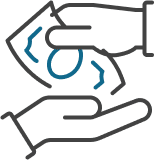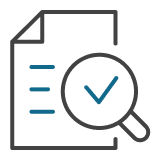
브랜드 보호 전략
고객이 소중히 여기는 브랜드의 가치를 보호할 수 있도록, 상표 출원부터 등록까지 전 과정에 걸쳐 체계적인 서비스를 제공합니다.
또한, 상표의 사용 및 관리에 필요한 법적 조언을 제공합니다.
상표 검색 및 분석
출원 전 상표 검색을 통해 기존 등록된 상표와의 충돌 가능성을 사전에 파악하여, 안전한 상표 등록을 돕습니다.
고객의 상표가 원활히 사용될 수 있도록 최적의 대안을 제시해드립니다.
분쟁 관리 및 해결
상표권 침해나 분쟁 발생 시 당사의 경험 많은 법률 전문가가 효율적인 해결책을 제시하여 고객의 브랜드 보호에 만전을 기합니다.

상표출원 의뢰
출원 진행하실 상표와 지정상품을 전달(이메일, 유선)

등록가능성 검토
선행상표검색을 통해 등록 가능성 컨설팅(이메일, 유선)

필요사항 전달 및 비용 입금
필요사항 전달, 최종 출원
지시 및 비용입금

특허청 제출
출원서 제출 및 출원번호통지

특허청 심사
거절이유통지시 의견서,보정서 제출하여 대응 (약 12-15개월)

등록결정
거절이유가 없거나 극복 시 출원공고 후 등록결정

등록대행
등록료 납부
상표등록증 수령 및 배송

갱신관리
상표권 갱신등록
(상표권은 10년마다 갱신)

